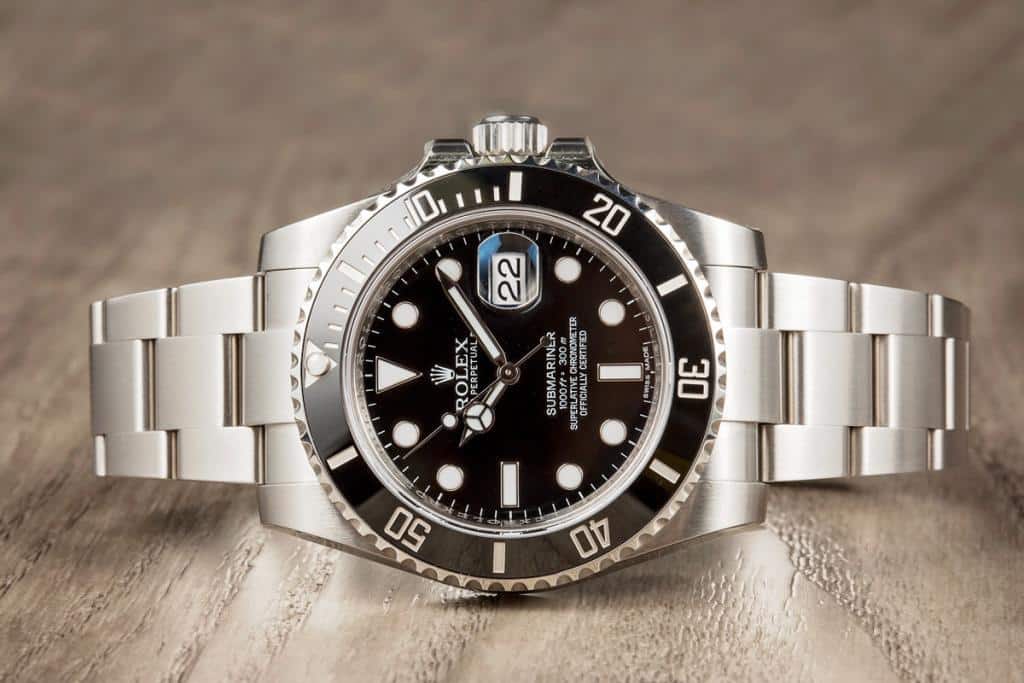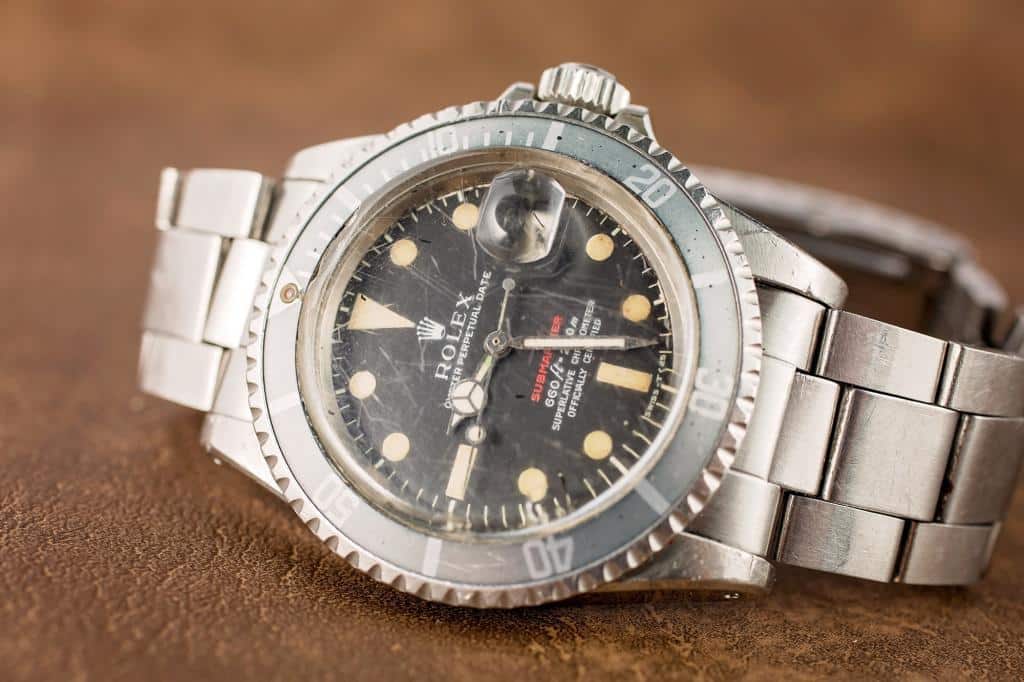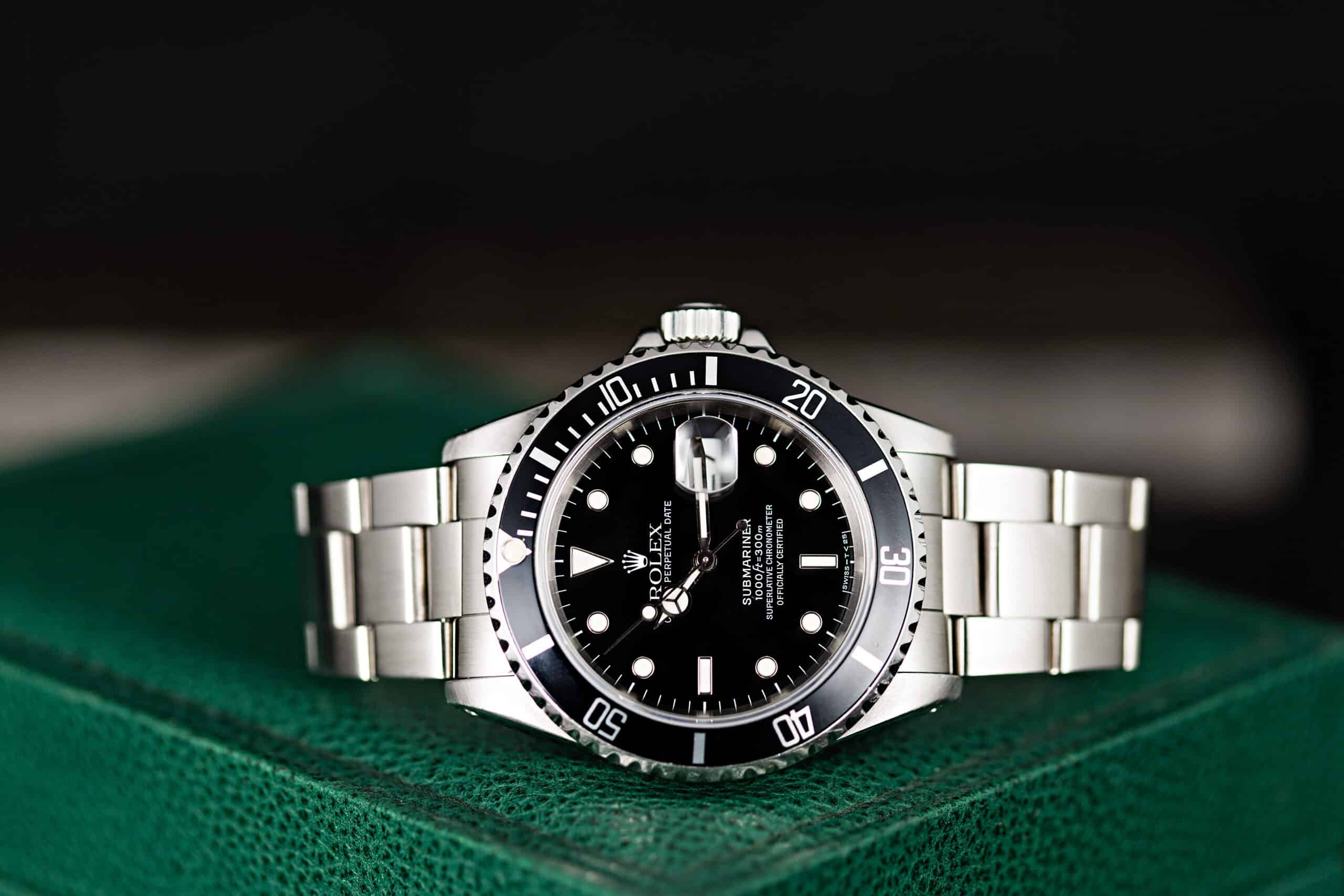Rolex’s history with waterproof watches dates back to the 1920’s with the invention of their iconic Oyster case. The first of its kind, the Oyster case is hermetically sealed, protecting the movement from water damage and dust particles. In the 1950’s, Rolex took the design of their case one step further by releasing the Submariner in 1953. This model also featured a dial set with lume for a precise reading as well as a 60-minute rotatable bezel. Early variations of the Submariner offered resistance to pressures of up to of either 100 meters or 200 meters, with an increase to the 300 meters that is available in modern references in 1979.
According to Bob’s Watches the Submariner was “Produced in 1953, the Rolex Submariner was first introduced in 1954 at Basel Watch Fair. The model comes in Oystersteel, white & yellow gold, and two-tone metals with date and no date variants. Made famous by James Bond films, this iconic sports watch has a 40mm case size and functions as a dive watch. Suggested retail price starts at $7,500 as of 2018.”
A Quick Overview of the Submariner’s Evolution
Instead of releasing several new models year after year like some of their competitors do, Rolex prefers to improve upon the models that already exist in their catalog, slowly perfecting each one over time. Case in point? The Rolex Submariner collection, which has undergone quite the transformation. One of the first significant upgrades was the addition of a date display and Cyclops lens with the reference 1680 in the 1960’s. As previously mentioned, the Submariner also increased its depth rating to 300 meters, or 1,000 feet, a few years later in the late 1970’s. This era also saw the addition of a scratch-resistant sapphire crystal as well as a unidirectional bezel, both integral pieces of the Submariner history and functionality. An all-gold variation made its debut in the late 1960’s as well as a two-tone reference in the early 1980’s. Around the same time as the first two-tone Sub came the addition of Rolex’s highly revered calibre 3135 perpetual movement, complete with 28,800 bph.
The contemporary Super Case Submariner debuted in the 2000’s with the brand’s 6-digit series of dive watches, bringing with it a broader case size, a maxi dial with a larger Chromalight display, a Cerachrom bezel insert, and a solid link Oyster bracelet. This new generation of dive watches maintains a 40mm case measurement and offers several dial and bracelet options as well as several metal finishes. While the newer Submariner is highly sought-after by collectors with modern tastes, there is still a substantial following for the classic Submariner of decades before.

The Submariner in Film
The Submariner is one of the most recognizable timepieces in the Rolex catalog, thanks in large part to its presence in TV and film. James Bond and the Submariner are closely associated, with the model itself exuding a debonair style that even the International Man of Mystery himself can appreciate. It wasn’t until the release of Dr. No in 1962 that James Bond first donned a dateless Rolex Submariner on his wrist, launching the model into even higher esteem. The next several decades would see several more appearances in the films Goldfinger (64’), Thunderball (65’), and License to Kill (89’). This franchise wasn’t the only notable appearance of the Submariner in film. Richard Dreyfuss donned one on his wrist in Jaws (75’), as did Kevin Spacey in the movie Outbreak (95’) and Bill Paxton in Titanic (97’).
Final Thoughts
The Submariner has seen an impressive transformation since its release in the 1950’s. However, it will be interesting to see which upgrades the model receives next, whether it be a new movement, more precious metal options, or a refinement of the 40mm Super Case. Either way, the Submariner is sure to maintain its status as an icon in the world of horology.







